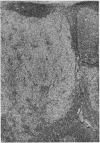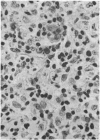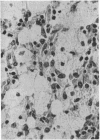Abstract
Forty cases of dermatopathic lymphadenopathy were found in a series of 906 consecutive lymph node biopsies (4.8 per cent).
The histologic development and progression of the disease was correlated with the clinical state of the patient.
In 35 of 40 cases the patients had active skin disease at the time of the biopsy; one of the remaining five patients had Hodgkin's disease, one had multiple myeloma and one had secondary syphilis. In the other two, no organic cause was found.
In nine cases (22.5 per cent), the histological pattern typical of dermatopathic lymphadenopathy was associated with malignant lymphoma. Except for two biopsies, which showed coexisting malignant lymphoma and dermatopathic lymphadenopathy, no histologic features were found which distinguished patients with malignant lymphoma from the remainder.
While the pathogenesis of the lymph node changes remains obscure, the histologic features suggest that it is at least in part an immune response, although the nature of the responsible antigen is unknown.
Full text
PDF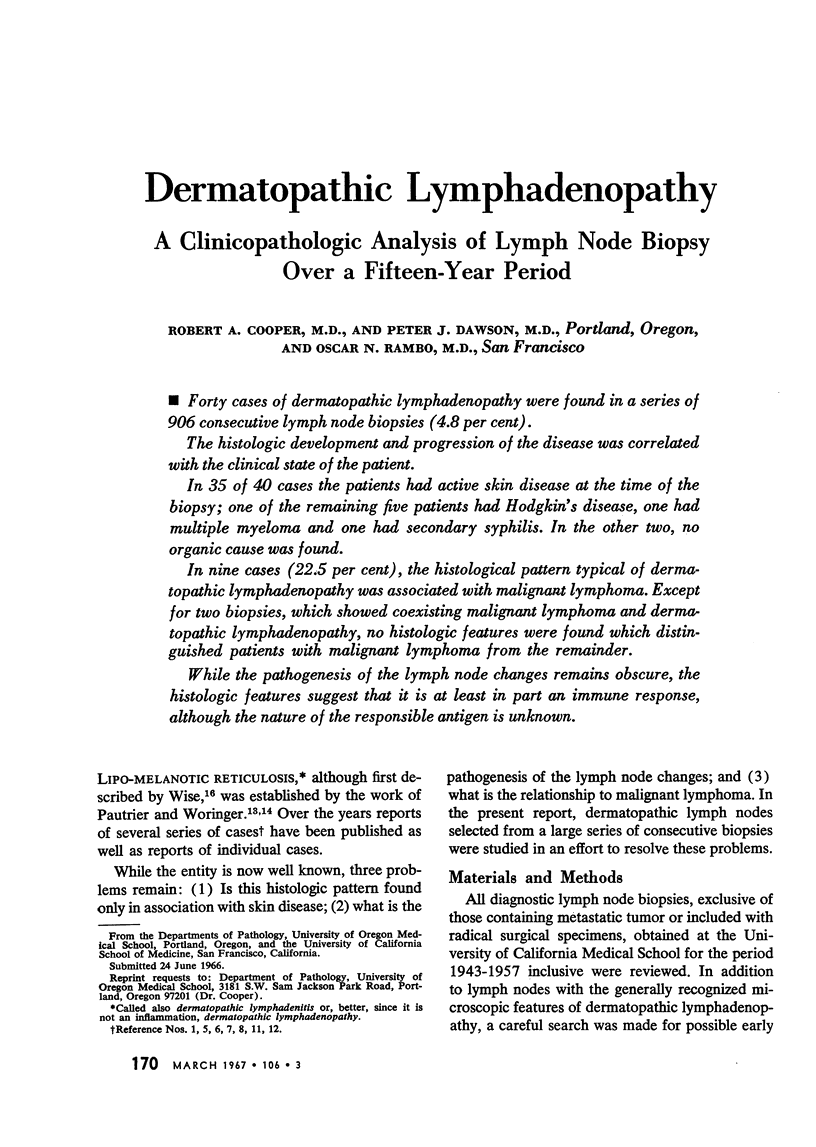
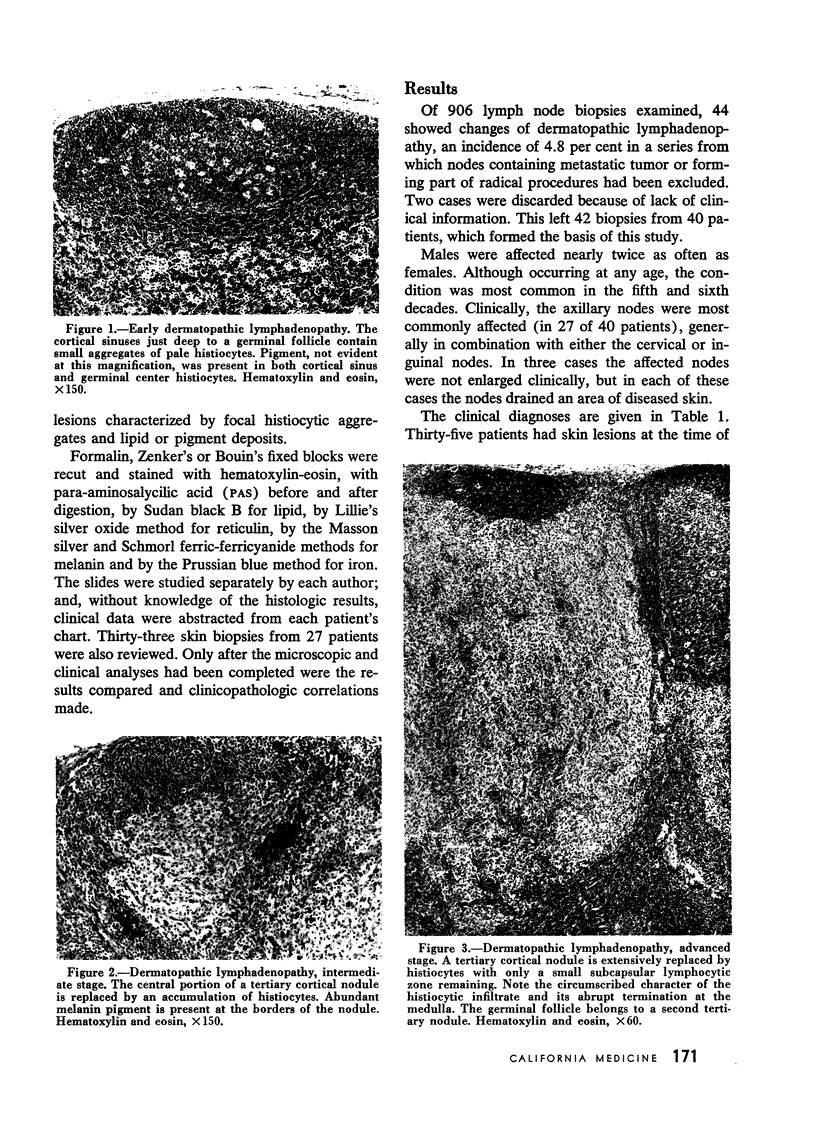
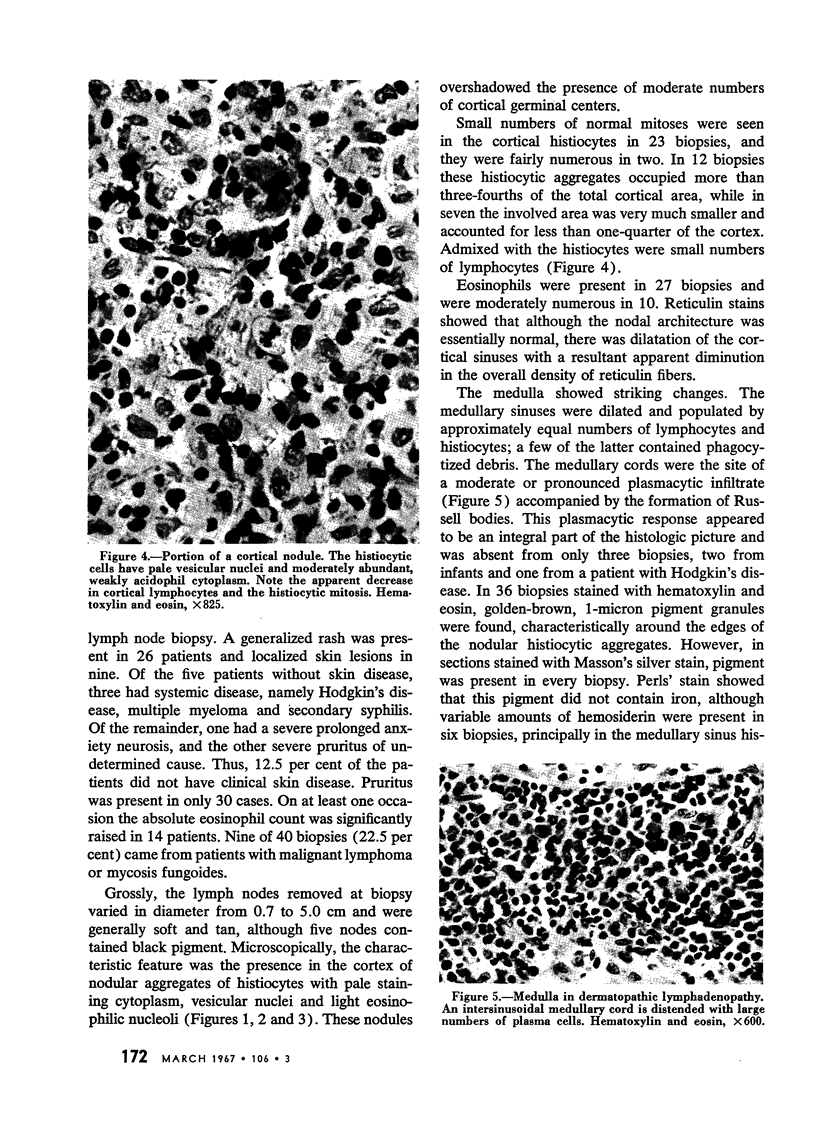
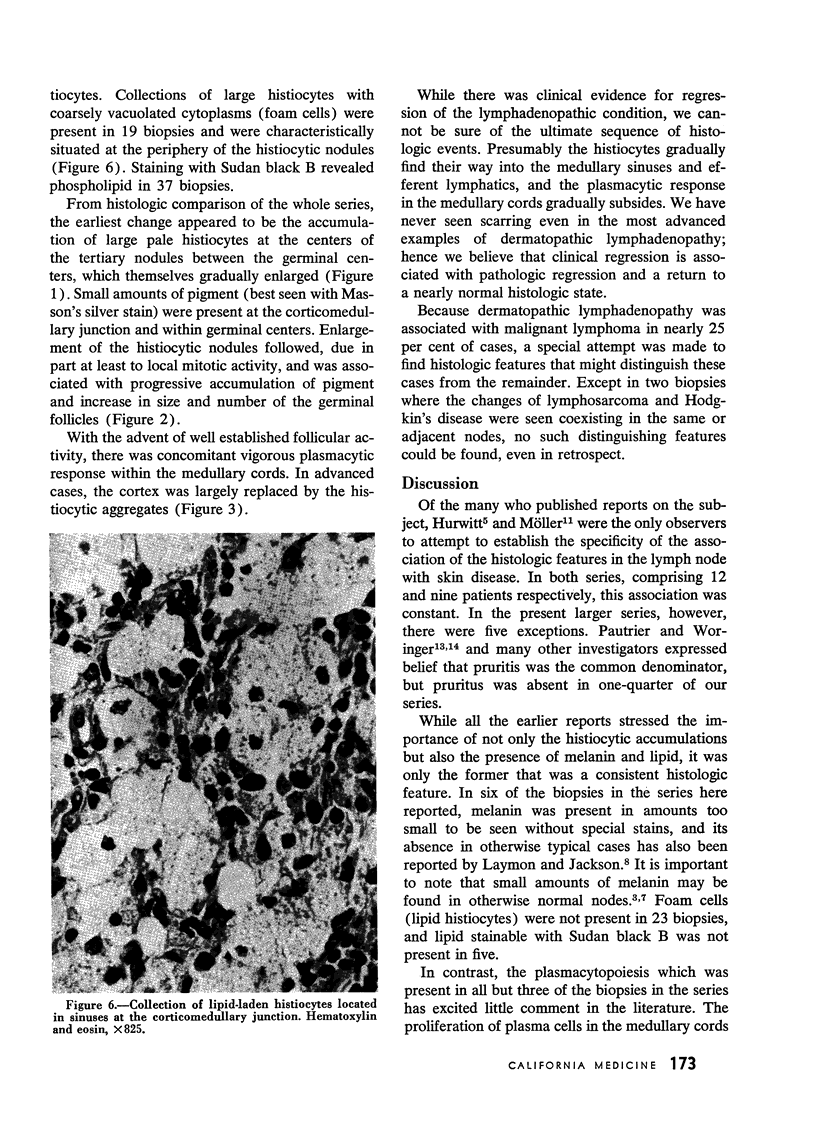
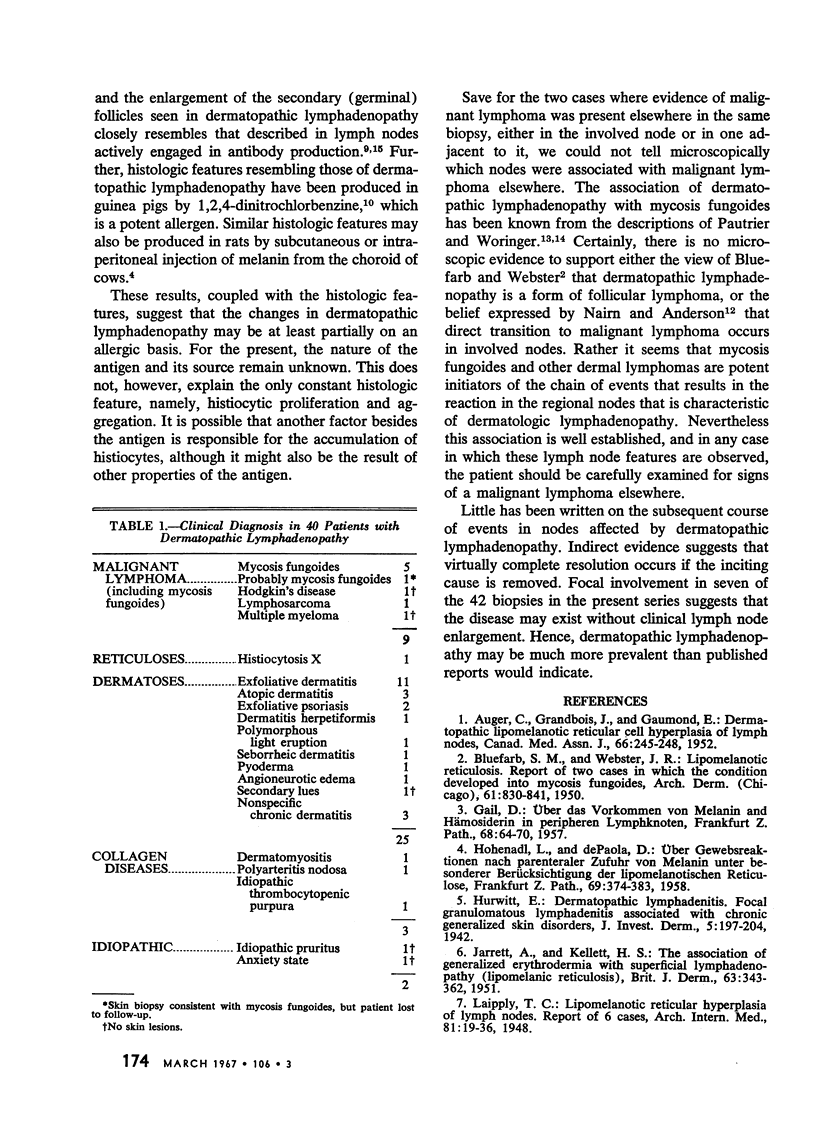
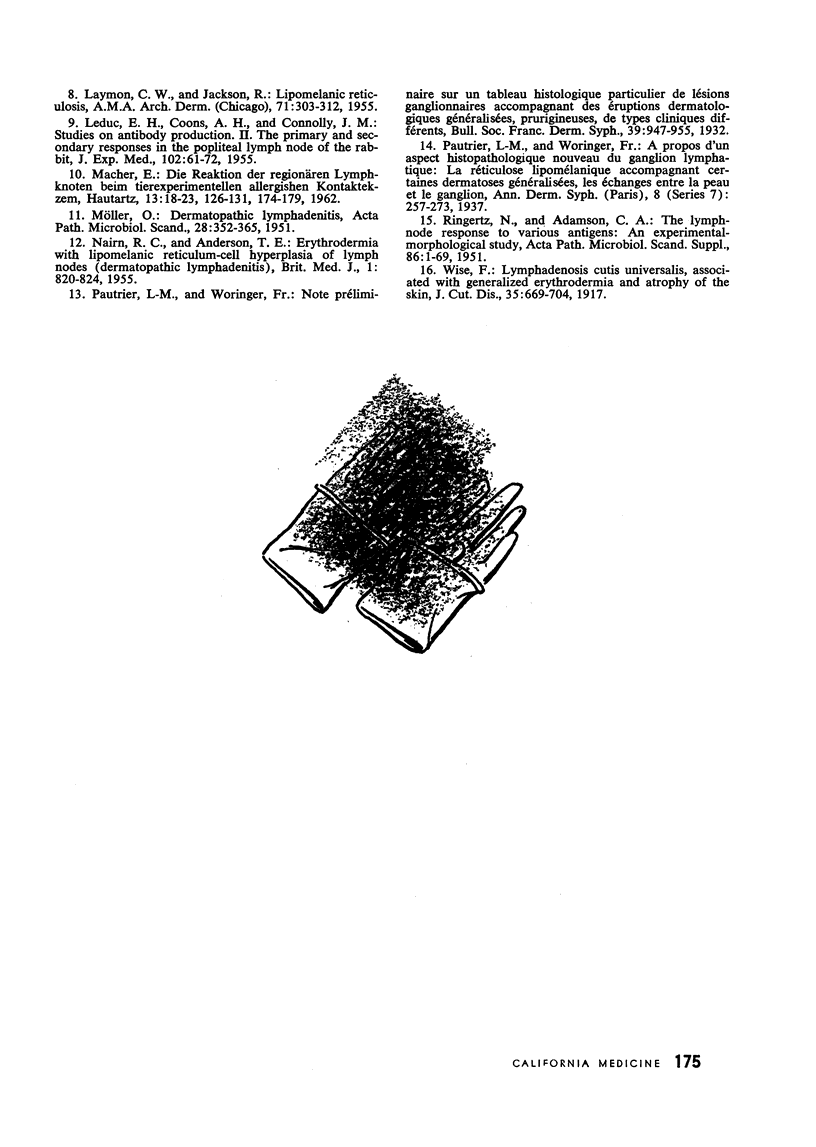
Images in this article
Selected References
These references are in PubMed. This may not be the complete list of references from this article.
- AUGER C., GRANDBOIS J., GAUMOND E. Dermatopathic lipomelanotic reticular cell hyperplasia of lymph nodes. Can Med Assoc J. 1952 Mar;66(3):245–248. [PMC free article] [PubMed] [Google Scholar]
- BLUEFARB S. M., WEBSTER J. R. Lipomelanotic reticulosis; report of two cases in which the condition developed into mycosis fungoides. Arch Derm Syphilol. 1950 May;61(5):830–841. doi: 10.1001/archderm.1950.01530120121012. [DOI] [PubMed] [Google Scholar]
- GAIL D. Uber das Vorkommen von Melanin und Hämosiderin in peripheren Lymphknoten. Frankf Z Pathol. 1957;68(1):64–70. [PubMed] [Google Scholar]
- HOHENADL L., DE PAOLA D. Uber Gewebsreaktionen nach parenteraler Zufuhr von Melanin unter besonderer Berücksichtigung der lipomelanotischen Reticulose. Frankf Z Pathol. 1958;69(4):374–383. [PubMed] [Google Scholar]
- JARRETT A., KELLETT H. S. The association of generalized erythrodermia with superficial lymphadenopathy (lipomelanic reticulosis). Br J Dermatol. 1951 Oct;63(10):343–362. doi: 10.1111/j.1365-2133.1951.tb13669.x. [DOI] [PubMed] [Google Scholar]
- LAYMON C. W., JACKSON R. Lipomelanic reticulosis. AMA Arch Derm. 1955 Mar;71(3):303–312. doi: 10.1001/archderm.1955.01540270015003. [DOI] [PubMed] [Google Scholar]
- LEDUC E. H., COONS A. H., CONNOLLY J. M. Studies on antibody production. II. The primary and secondary responses in the popliteal lymph node of the rabbit. J Exp Med. 1955 Jul 1;102(1):61–72. doi: 10.1084/jem.102.1.61. [DOI] [PMC free article] [PubMed] [Google Scholar]
- MOLLER O. Dermatopathic lymphadenitis. Acta Pathol Microbiol Scand. 1951;28(4):352–365. [PubMed] [Google Scholar]
- NAIRN R. C., ANDERSON T. E. Erythrodermia with lipomelanic reticulum-cell hyperplasia of lymph nodes (dermatopathic lymphadenitis). Br Med J. 1955 Apr 2;1(4917):820–824. doi: 10.1136/bmj.1.4917.820. [DOI] [PMC free article] [PubMed] [Google Scholar]
- RINGERTZ N., ADAMSON C. A. The lymph-node response to various antigens; an experimental-morphological study. Acta Pathol Microbiol Scand Suppl. 1950;86:1–69. [PubMed] [Google Scholar]





